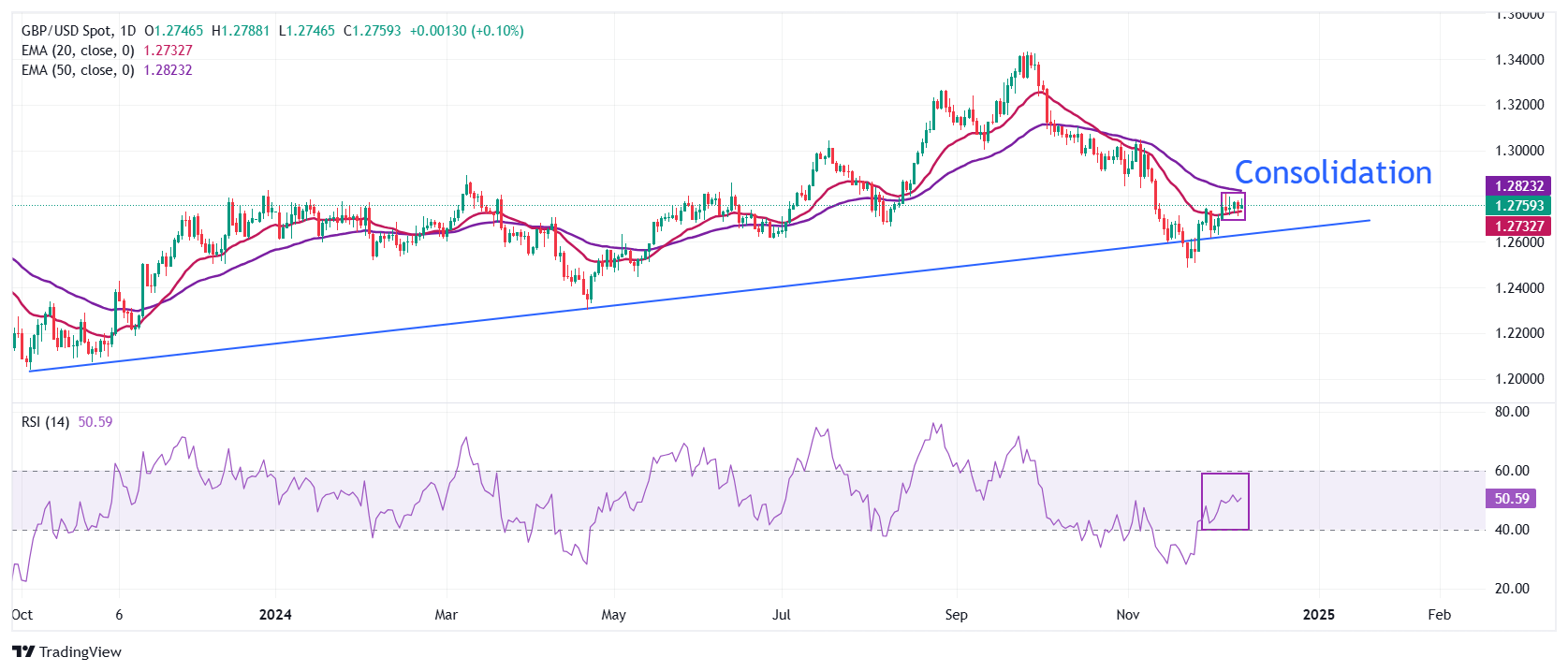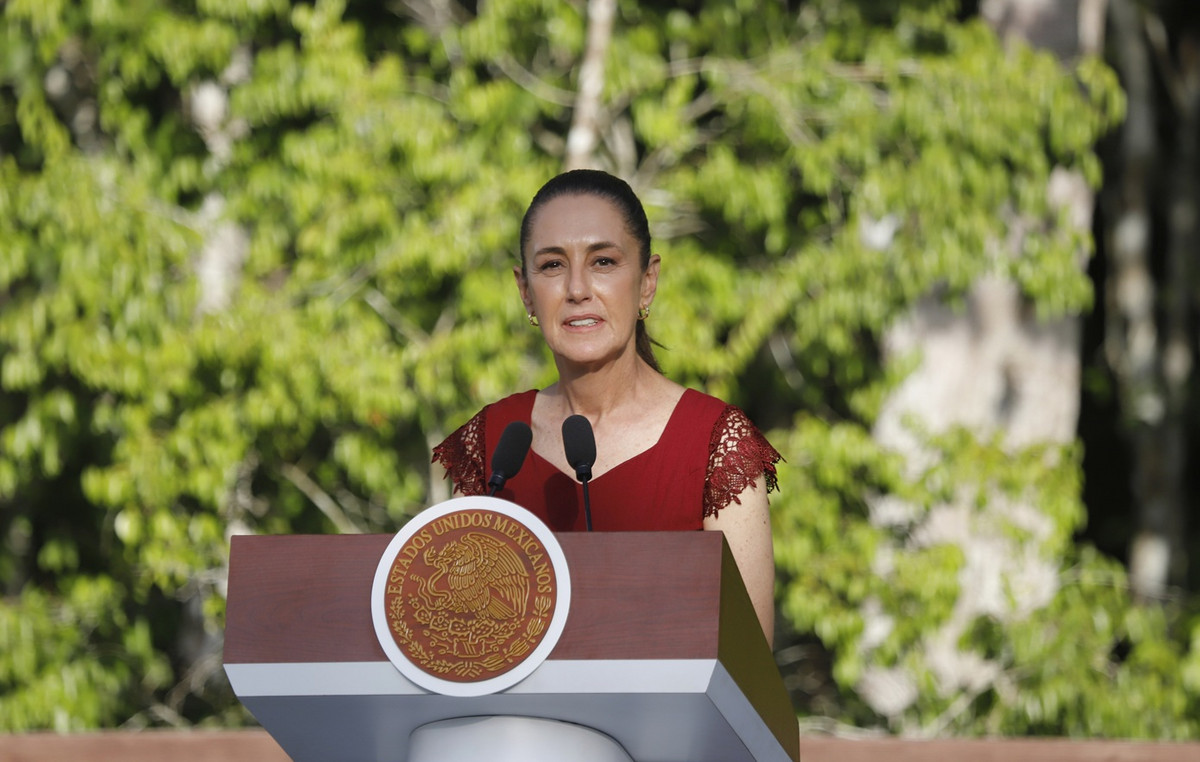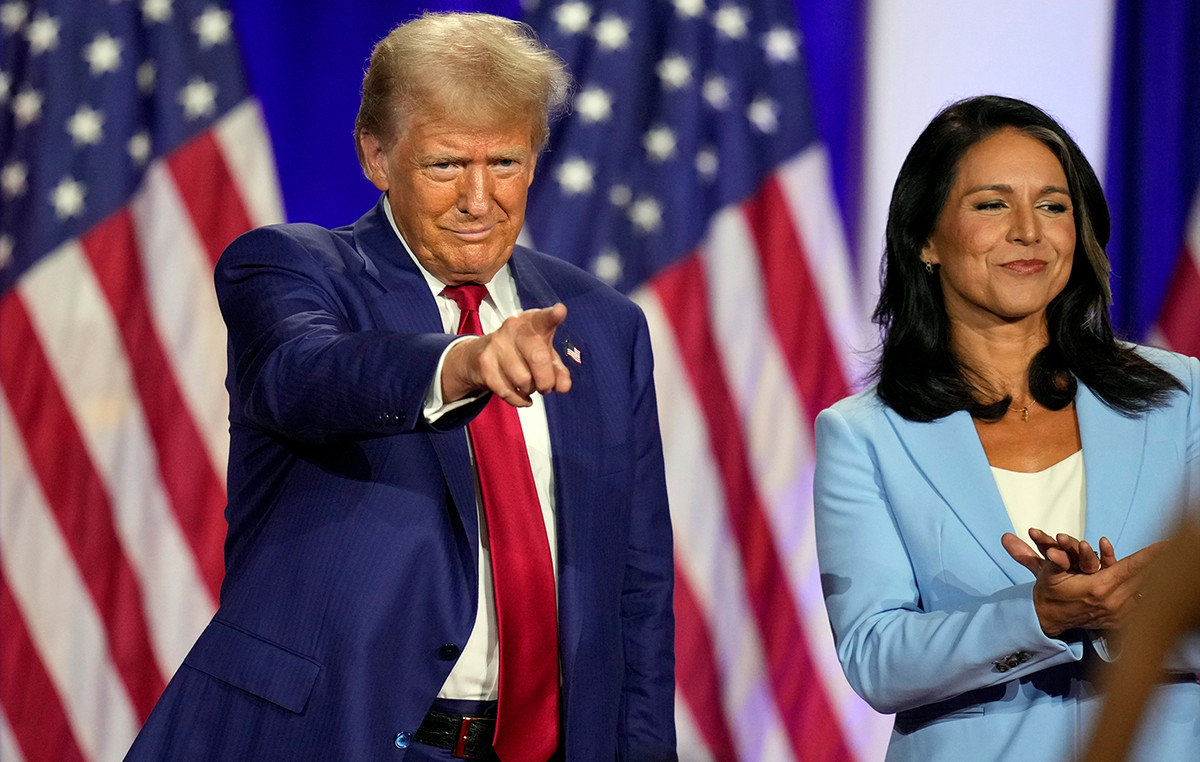- The British pound is trading sideways but holding firm on the assumption that the BoE will keep interest rates steady on December 19.
- Traders expect the BoE to cut interest rates at a slower pace compared to other central banks in Europe and North America.
- Markets fully price in the Fed to cut interest rates by 25 bps on Wednesday.
The British Pound (GBP) consolidates against its major peers on Thursday, but the British currency remains firm against its main counterparts on expectations that the Bank of England (BoE) will follow a more gradual policy easing cycle compared to other central banks in Europe and North America.
Inflation in the United Kingdom (UK) services sector remains high, allowing the BoE to remain on a slow path towards interest rate cuts. Megan Greene, external member of the BoE’s Monetary Policy Committee (MPC), warned in her latest comment that she suspects the BoE’s inflation target “at the end of our forecast period, which is three years.”
Signs of higher government spending and higher costs for employers in Labour’s first budget have also increased uncertainty over the inflation outlook. UK employers are expected to pass on the impact of the increased employer contribution to National Insurance to consumers.
Market expectations that the BoE will cut interest rates at a moderate pace have also kept the Pound Sterling strong against the US Dollar this year, unlike other European currencies such as the Euro (EUR) and Swiss Franc (CHF). , which have fallen 4.9% and 5.5%, respectively.
For the BoE policy meeting announcement on December 19, traders see the central bank leaving interest rates unchanged at 4.75%, but pricing in three rate cuts in 2025.
On the economic data front, investors await monthly Gross Domestic Product (GDP) data and factory data for October, due out on Friday, for clues on the current state of the UK’s economic health. .
Daily Market Summary: Pound Sterling Rises Against US Dollar
- The British Pound rises against the US Dollar (USD) in the London session on Thursday, but continues to struggle to return to the key resistance of 1.2800. The GBP/USD pair rises as the US Dollar (USD) falls amid firm expectations that the Federal Reserve (Fed) will cut interest rates in Wednesday’s monetary policy announcement. The Dollar Index (DXY), which tracks the value of the Dollar against six major currencies, falls around 106.50.
- Traders have almost fully priced in a 25 basis point (bp) interest rate cut to 4.25%-4.50% by the Fed for next week’s policy meeting, according to the CME’s FedWatch tool . Dovish bets on the Fed strengthened after the release of the United States (US) Consumer Price Index (CPI) report for November on Wednesday, which showed inflation pressures growing in line with estimates.
- The CPI report showed that annual headline and core inflation, which excludes volatile food and energy prices, rose 2.7% and 3.3%, as expected. Headline inflation growth was the highest in four months, suggesting that progress in the disinflation process has stalled. Still, muted rental price growth fueled dovish bets on the Fed.
- Investors will pay close attention to the US Producer Price Index (PPI) data for November and the Initial Jobless Claims data for the week ending December 6, which will be released at 1 p.m. :30 GMT.
Technical Analysis: Sterling Stagnates Around 1.2750
The British Pound is consolidating in a tight range around 1.2750 against the US Dollar for almost a week. The GBP/USD pair remains slightly above the 20-day EMA around 1.2720.
The 14-day Relative Strength Index (RSI) is oscillating in the range of 40.00-60.00, suggesting a sideways trend.
Looking down, the pair is expected to find support near the ascending trend line around 1.2500, which is drawn from the October 2023 low near 1.2035. To the upside, the 200-day EMA around 1.2830 will act as key resistance.
The British Pound FAQs
The British Pound (GBP) is the oldest currency in the world (AD 886) and the official currency of the United Kingdom. It is the fourth most traded foreign exchange (FX) unit in the world, accounting for 12% of all transactions, averaging $630 billion a day, according to 2022 data. Its key trading pairs are GBP/ USD, which represents 11% of FX, GBP/JPY (3%) and EUR/GBP (2%). The British Pound is issued by the Bank of England (BoE).
The most important factor influencing the value of the Pound Sterling is the monetary policy decided by the Bank of England. The Bank of England bases its decisions on whether it has achieved its main objective of “price stability” – a constant inflation rate of around 2%. Its main tool to achieve this is the adjustment of interest rates. When inflation is too high, the Bank of England will try to control it by raising interest rates, making it more expensive for people and businesses to access credit. This is generally positive for sterling, as higher interest rates make the UK a more attractive place for global investors to invest their money. When inflation falls too much it is a sign that economic growth is slowing. In this scenario, the Bank of England will consider lowering interest rates to make credit cheaper, so that companies will take on more debt to invest in projects that generate growth.
The data released measures the health of the economy and may affect the value of the pound. Indicators such as GDP, manufacturing and services PMIs and employment can influence the direction of the Pound.
Another important data that is published and affects the British Pound is the trade balance. This indicator measures the difference between what a country earns from its exports and what it spends on imports during a given period. If a country produces highly in-demand export products, its currency will benefit exclusively from the additional demand created by foreign buyers seeking to purchase those goods. Therefore, a positive net trade balance strengthens a currency and vice versa in the case of a negative balance.
Source: Fx Street
I am Joshua Winder, a senior-level journalist and editor at World Stock Market. I specialize in covering news related to the stock market and economic trends. With more than 8 years of experience in this field, I have become an expert in financial reporting.








